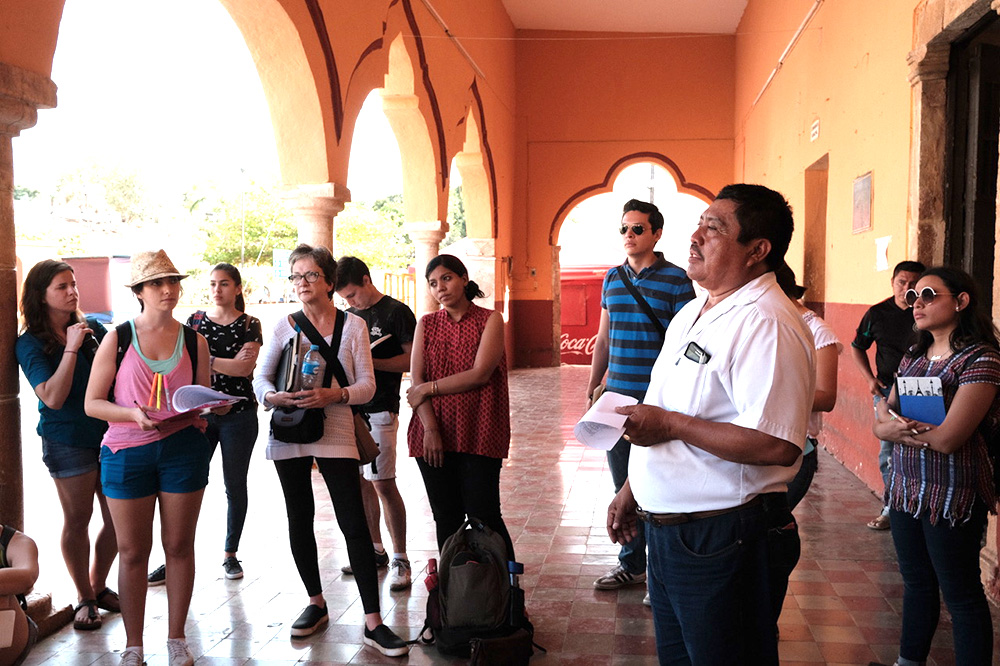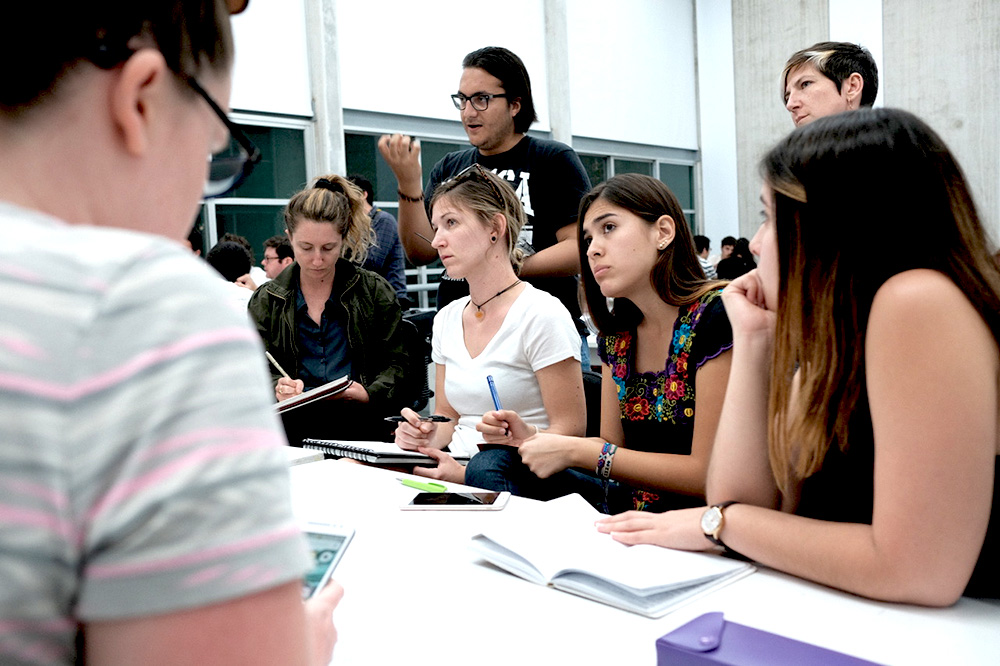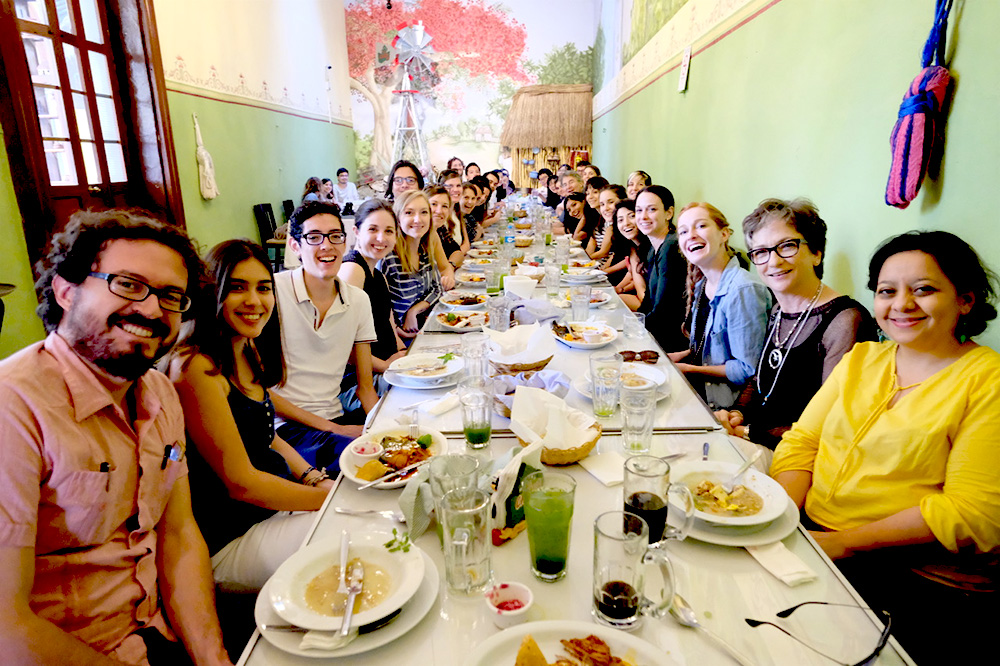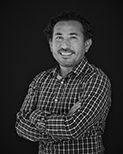
The School or Architecture at UT-Austin has engaged in an initiative that fosters relationships and learning experiences with Mexico and Latin-America. Faculty interest in this area of the world has become more robust in recent years. I was fortunate to join this effort in the fall of 2013 when I became part of the faculty at UTSoA. Mexico is an area of focus for my research, and I have been eager to share the opportunities that Mexico can offer to broaden the vision of our students about global issues of heritage preservation and conservation of historic buildings.
The design studio is one of the core classes of our curriculum and with fifteen contact-hours a week, it offers the opportunity to study these issues in depth. At times, we take design studio experiences on the road as travel studios and visit different locations around the world.
"The studio requires serious logistical planning to ensure that students have access to places, information, and, most importantly, people."

In the spring of 2016 Assistant Professor Gabriel Diaz, Associate Professor Michael Holleran and myself offered a travel studio, Studio Mexico, a multidisciplinary design studio that could embrace environmental and conservation issues in the Yucatan Peninsula of Mexico. About thirty students from architecture, historic preservation, and landscape architecture joined this venture. The studio focused on the community of Santa Elena, a small rural Mayan community a few miles north of the pre-Columbian site of Uxmal, which is currently listed as a World Heritage property by UNESCO. Santa Elena’s cultural landscape includes a historic center dating from the classic Mayan period. It preserves a well-defined colonial center that includes an outstanding church built in the seventeenth century, a noria (water well), and shrines for the farmers among other historic structures. The studio made a week-long site visit in March, partnering with students of the School of Architecture of the Universidad Marista de Merida. During the visit, the students conversed with local authorities and identified the environmental and preservation challenges that Santa Elena faces as a community. Proposals to address those challenges and embrace sustainable and socially manageable strategies emerged from collaboration with local students. Back in Austin, students worked through the semester developing those projects in groups and individually.
The studio’s output is multiple projects at different scales, loosely fitting together but separable. With Studio Mexico as our most recent example, we offer observations on travel studios’ usefulness as a tool for engaging international experiences while understanding the needs of a rural area that has been forgotten in globalization’s frenzy. The international studio in Mexico is not a substitute for a consultant or internship project; its essence is open-ended and creative exploration that might help to open new doors. Its value is as an immersive process for local authorities and the community, as well as the students. This studio gives students an opportunity to engage with the reality of designing within an existing historic environment while gaining new perspectives that expand the traditional solution often proposed in historic contexts. The studio requires serious logistical planning to ensure that students have access to places, information, and, most importantly, people. Where these conditions are met, it is a most promising tool.

Students can expand the solution of the environment and its relationship with the historic properties in unimaginable ways. This is perhaps the most important use of the studio. In the professional realm, the planning discourse for management of heritage properties can be constrained. Certain possibilities become red lines that people avoid, especially when intervening historic structures are subjected to a series of regulations. Political dead zones or remnants of processes that may have left bruised feelings might play an important role in the development of solutions that might bring change to the community. While we make students aware of this constraint, the academic environment allows for flexibly and experimentation. They can touch the third rail and it does not shock!

Working in the humble environment of a small Mayan community calls for different set of sensibilities from students. While the design of new buildings in more prosperous areas might engage an attitude of grandiosity, the modesty necessary to address the issues of a rural environment forces one to think differently, to think realistically, to embrace the other, and to be more aware of their real needs. At the beginning of our site visit, we introduced the students and their professional qualifications, and told local authorities that these were the people who in two years would be their high-priced consultants. Once these graduates are in their consultant roles, they will operate with greater constraints on their freedom of imagination. Through this immersive academic experience, Studio Mexico has imprinted the realities and the ethos of the historic properties in Latin-America on one talented cohort of future professionals.

Benjamin Ibarra Sevilla Assistant Professor, School of Architecture Professor Sevilla's most recent research work focuses on the transmission of building technology from Europe to the Americas focusing on the constructive and geometric analysis of sixteenth-century ribbed vaults in Mexico.

